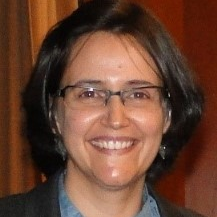Efficient Water and Energy Management in Urban Water Systems
A special issue of Water (ISSN 2073-4441). This special issue belongs to the section "Water-Energy Nexus".
Deadline for manuscript submissions: closed (30 April 2022) | Viewed by 9801
Special Issue Editors
Interests: water and energy efficiency; resilience; urban water systems, hydraulic modeling; performance assessment
Special Issues, Collections and Topics in MDPI journals
Special Issue Information
Dear Colleagues,
Urban water systems (UWSs) are energy-intensive worldwide, mainly for drinking-water pumping and aeration in wastewater treatment. In recent years, systemic approaches to assess multiple sources of inefficiency in drinking water systems (e.g., pump equipment, inadequate layout and operation and water losses) have started to be explored, with a high potential for improving efficiency. There remains a need to adapt and explore these approaches to wastewater and stormwater systems to assess inefficiencies associated with sewer inflow, infiltration and network layout. Similarly, recent developments have shown a high potential to promote energy efficiency through better operation and adequacy of treatment capacity in wastewater treatment plants. Moreover, energy recovery from turbines or wastewater has yet to be fully exploited. Approaches that allow a comprehensive assessment of UWS energy efficiency between the main stages of UWSs—drinking water abstraction and transport, drinking water treatment, drinking water transport and distribution, wastewater collection and transport, wastewater treatment and discharge and water reclamation and reuse—can significantly contribute to the decarbonization of the urban water sector.
For this Special Issue on “Efficient Water and Energy Management in Urban Water Systems”, we are interested in comprehensive approaches for assessing energy efficiency in UWSs and their demonstration in real case studies for the diagnosis, selection, implementation, and monitoring of improvement measures.
Dr. Dália Cruz Loureiro
Dr. Catarina Silva
Guest Editors
Manuscript Submission Information
Manuscripts should be submitted online at www.mdpi.com by registering and logging in to this website. Once you are registered, click here to go to the submission form. Manuscripts can be submitted until the deadline. All submissions that pass pre-check are peer-reviewed. Accepted papers will be published continuously in the journal (as soon as accepted) and will be listed together on the special issue website. Research articles, review articles as well as short communications are invited. For planned papers, a title and short abstract (about 100 words) can be sent to the Editorial Office for announcement on this website.
Submitted manuscripts should not have been published previously, nor be under consideration for publication elsewhere (except conference proceedings papers). All manuscripts are thoroughly refereed through a single-blind peer-review process. A guide for authors and other relevant information for submission of manuscripts is available on the Instructions for Authors page. Water is an international peer-reviewed open access semimonthly journal published by MDPI.
Please visit the Instructions for Authors page before submitting a manuscript. The Article Processing Charge (APC) for publication in this open access journal is 2600 CHF (Swiss Francs). Submitted papers should be well formatted and use good English. Authors may use MDPI's English editing service prior to publication or during author revisions.
Keywords
- energy
- efficiency
- urban water systems
- performance assessment systems
- effectiveness
- diagnosis






